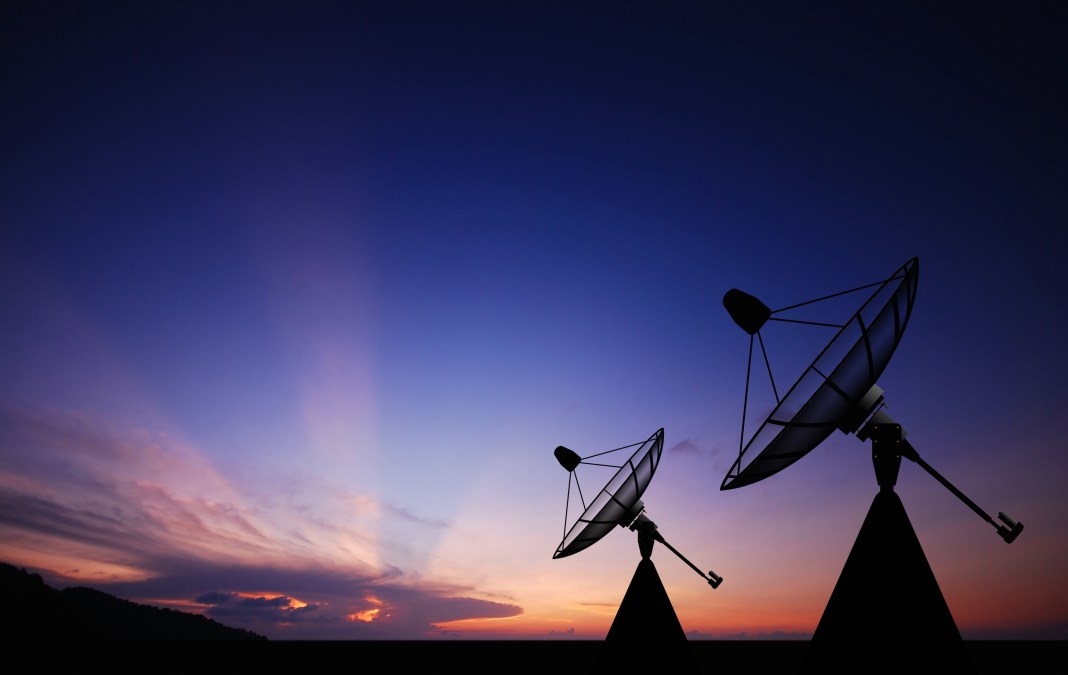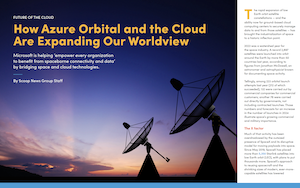- Sponsored
- Insights
How Azure Orbital and the cloud are expanding our worldview

The rapid expansion of low Earth orbit satellite constellations, combined with a growing network of ground-based cloud computing centers, has brought space industrialization to a historic inflection point, according to a new report.
A record 2,897 satellites were launched into orbit around the Earth by more than 50 countries last year, according to Jonathan McDowell, an astronomer and astrophysicist known for documenting space activity. An even greater number are expected to be launched in 2024.
All of that contributes to a supernova of new space-based communications and Earth-observation sensor capabilities, says Stephen Kitay, a former Pentagon deputy assistant secretary for space policy, now senior director of Azure Space at Microsoft.

“A huge transformation is happening in space — and the technology that was never there before — effectively extending the internet and edge computing into space,” Kitay said in the report, produced by Scoop News Group and underwritten by Microsoft.
What’s been missing until recently, he says, is a reliable and secure way to manage and transmit the explosive growth of satellite data being collected in space and the means to automate and manage satellite activities more efficiently.
That’s changing as a new era of secure, scalable cloud computing centers strategically located around the globe is developing to stay connected to all those satellites — along with a new generation of software platforms to manage the devices, applications, and data on board all of them, according to the report.
How federal agencies stand to benefit
The report highlights the rise of hybrid space architecture, which Microsoft helped pioneer under the Azure Space banner launched in 2020. The concept involves “bringing cloud and space technologies together to foster a partner ecosystem,” explained Kitay. That effort has spawned a variety of components, including:
- Azure Orbital Ground Station – designed to give satellite operators, including government customers, the ability to deliver space data with near-zero latency to Microsoft’s global network of Microsoft and partner ground stations.
- Azure Orbital Cloud Access – enables a seamless cloud experience anywhere on the planet by combining Microsoft Cloud with low latency satellite and 5G communications.
- Microsoft Planetary Computer – a multi-petabyte catalog of global open geospatial data with intuitive APIs aimed at helping researchers, scientists, students, and organizations worldwide gain valuable insights from Earth observation data.
At the same time, Microsoft is “bringing our code and our software into space by empowering developers to build applications on the ground in the cloud and then seamlessly deploy them on board spacecraft,” Kitay said.
The report also highlights examples of how federal agencies, such as the U.S. Forest Service, the Environmental Protection Agency, the Department of Agriculture and the Defense Department, among others, stand to gain powerful new insights from Earth observation data to better support their missions.
“Removing the barriers to seamless and secure connectivity from ground to orbit creates entirely new opportunities for federal government customers, including those operating in classified environments,” said Zach Kramer, vice president of the Mission Engineering unit at Microsoft.
“Defense and civilian agencies can leverage this ubiquitous connectivity to develop and deploy new applications, gather and transmit data at the speed of relevance, and gain an information advantage to serve the American people.”
Download the full report. And look for additional reports in our series “The Future of Cloud” underwritten by Microsoft.
This article was produced by Scoop News Group, for FedScoop and underwritten by Microsoft.

